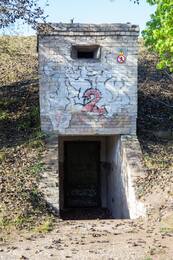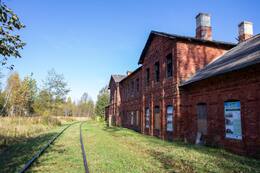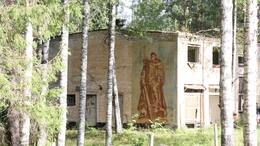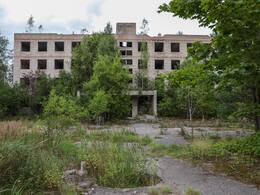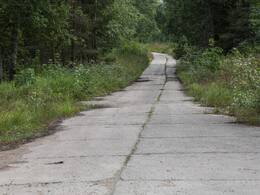Stratēģiskās/ ballistiskās raķetes
Stratēģiskās/ ballistiskās raķetes. Ballistiskā raķete ir raķete, kuras lidojuma trajektorija ir ballistiska, suborbitāla, un tā paredzēta kaujas galviņas nogādāšanai noteiktā mērķī. Raķetes virzienu un ātrumu nosaka raķetes orientācija starta laukumā un dzinēja darbība. Pēc dzinēja izslēgšanas raķete turpina lidojumu saskaņā ar orbitālās mehānikas un ballistikas likumiem. Pirmā ballistiskā raķete A-4, vairāk zināma kā V-2, tika izgatavota nacistiskajā Vācijā 1930.-1940. gados, un tās konstruktors bija Verners fon Brauns.
Starpkontinentālā ballistiskā raķete jeb SKBR (angļu: Intercontinental ballistic missile jeb ICBM) ir tālas darbības (vairāk nekā 5500 km) ballistiskā raķete. Tās parasti izmanto kā stratēģiskos ieročus un paredzētas kodolieroču nogādāšanai lielos attālumos vai uz citiem kontinentiem. PSRS pirmā SKBR R-7 tika palaista 1957. gada 4.oktobrī PSRS. R-7 bija pasaulē pirmā starpkontinentālā ballistiskā raķete (SKBR), kuru izstrādāja PSRS 1950. gados. Nedaudz modificētā veidā ar to tika palaists pirmais Zemes mākslīgais pavadonis. R-7 kalpoja par bāzi jaudīgākiem kosmiskajiem nesējiem, tādiem ka Vostok, Moļnija, Sojuz.
Pašreiz SKBR ir šādu valstu bruņojumā: ASV, Krievija, Apvienotā karaliste, Francija, Ķīna. SKBR izstrādi pašlaik veic Indija, Izraēla, Pakistāna un Ziemeļkoreja.
Papildus izziņas avoti
Stratēģiskās/ ballistiskās raķetes. Vikipēdija. https://lv.wikipedia.org/wiki/Ballistisk%C4%81_ra%C4%B7ete
Starpkontinentālā ballistiskā raķete. Vikipēdija. https://lv.wikipedia.org/wiki/Starpkontinent%C4%81l%C4%81_ballistisk%C4%81_ra%C4%B7ete
R-7 (raķete). Vikipēdija. https://lv.wikipedia.org/wiki/R-7_(ra%C4%B7ete)
Saistītās laikalīnijas
Saistītie objekti
Pazemes bunkuri Valkā
Atrodas Valkas pilsētas centrā, Ausekļa ielas kreisajā pusē, blakus Ādama Tērauda skolai.
Padomju laika armijas bunkuri Valkā ir bijuši vieni no Padomju Latvijas laika slepenākajām vietām, kurā drīkstēja ieiet tikai ar speciālām atļaujām. 1953.–1989. gados te izvietojās Padomju Armijas stratēģisko raķešu sakaru rezerves punkts. Ar lielām automašīnām, kurām bija 16 riteņi, veda lielus dzelzsbetona blokus, lai veidotu bunkurus. Kad visi trīs bija izbūvēti, tos apbēra ar granti papildus nostiprināšanai un nosiltināšanai. Bunkuros atradās stratēģisko raķešu sakaru rezerves centrs, kurš bija pakļauts Ļeņingradas sakaru centram. No šiem bunkuriem tika regulētas šahtas, kurās atradās armijas raķetes. Valkas un Valgas apkārtnē tādas bija 20. 1962.gada oktobrī Karību krīzes laikā šīs raķetes bija kaujas gatavībā un notēmētas Floridas virzienā. Leģenda vēsta, ka pietrūka pāris stundas, lai tās patiešām tiktu palaistas.
Turpat blakus aiz Ādama Tērauda skolas un pazemes bunkuriem atrodas Zviedru (Šeremetjeva) skansts. Mākslīgi veidotais zemes valnis tika veidots Lielā Ziemeļu kara sākumā, ap 1702.gadu, lai aizsargātu Valku pret zviedriem. Skansts stāvākā siena ir vērsta pret Ērģemi, bet otra puse pret Ausekļa ielu.
Mūsdienās bunkurus var aplūkot tikai no ārpuses.
Valkas dzelzceļa stacija (Valka II)
Atrodas Poruka ielas galā, blakus mūsdienās neizmantotajām sliedēm.
Stacijas ēka celta ap 1896./97.gadu. Sākotnēji tajā bija ierīkotas šaursliežu dzelzceļa līnijas, posmā Valka – Rūjiena – Pērnava. Pirmā pasaules kara laikā dzelzceļš tika stipri izpostīts. Pēc valsts robežas novilkšanas Valkas dzelzceļa stacija (Valka II) kļuva par robežstaciju. 1920. gada septembra beigās Valkā ieradās sevišķā dzelzceļu valdes komisija, kas bija pilnvarota vest sarunas un slēgt līgumu ar Igauniju par pasažieru pārvešanu no vienas valsts stacijas uz otru. Stratēģiski svarīgi bija arī sliežu ceļi starp Lugažu, Valkas un Valgas staciju, kas savā starpā veidoja trijstūri, lai varētu apgriezt bruņuvilcienus pretējā virzienā. Padomu gados PSRS armija šo staciju izmantoja, lai uz Valku nogādātu ballistiskās raķetes. 1944.gada septembrī, atkāpjoties vācu armijai, stacija tika izpostīta.
Mūsdienās šajā vietā apskatāma stacijas ēka tikai no ārpuses, kur izvietoti informatīvas plāksnes par dzelzceļa nozīmīgumu Valkā/Valgā.
Netālu no stacijas ēkas atrodas piemiņas akmens 1941. gada 14. jūnijā izsūtītajiem uz Sibīriju.
Akmeni atklāja 1996. gada 14. jūnijā.
1941. gada naktī no 13. uz 14. jūniju notika Latvijas iedzīvotāju masveida deportācija uz PSRS iekšzemes apgabaliem. No Valkas dzelzceļa stacijas bez tiesas sprieduma, iepriekšēja brīdinājuma un paskaidrojumiem lopu vagonos izveda vairāk kā 90 Valkas un apkārtnes personas.
Piemiņas vietā – no piemiņas akmens uz Domes bulvāra pusi – Latvijas Nacionālās jaunatnes apvienības Valkas skolnieku grupas bijušie dalībnieki Ilgvars Broks /1931-2004/ un Alfons Meiris /1930- 2016/ iestādīja 7 ozoliņus savu biedru piemiņai. LNJA Valkas skolnieku grupas dalībniekus arestēja 1945. gada 5. decembrī un 1946. gada martā izsūtīja uz Sibīriju.
Savukārt no piemiņas akmens uz bijušās dzelzceļa stacijas pusi skatāma daļa no bērzu birzs, kuru 1936. gada Meža dienās stādīja Valkas aizsardzes.
Padomju armijas raķešu bāze Zeltiņos
Atrodas “Medņukalni”, Zeltiņu pagasts, Alūksnes novads.
No 1961. līdz 1989.gadam Alūksnes rajona “Zeltiņos” darbojās padomju armijas īpaši slepens militārs objekts – kodolraķešu bāze. Te izvietotas virszemes vidējā rādiusa ballistiskās raķetes R-12(8K63) ar 4 starta laukumiem. Lidojuma attālums 2200 km. Šajā periodā armija izmanto apmēram 300 ha lielu, ar dzeloņdrātīm iežogotu teritoriju. Sadzīves (dzīvojamā) zona un īpaši slepenā zona – palikušas mantojumā arī šobrīd. Betonētie ceļi ved uz tajā laikā acij slēptām vietām – angāriem, palaišanas laukumiem, bumbu patvertnēm.
Kompakta teritorija nepilna kilometra attālumā no valsts reģionālās nozīmes autoceļa P34 “Sinole-Silakrogs”, vairāku desmitu hektāru platībā izvietotas dažādas būves saistībā ar kodolraķešu uzturēšanu un apkalpošanu (angāri, degvielas u.c. materiālu noliktavas, kara tehnikas apkopes telpas, novērošanas posteņi, asfaltēti un betonēti laukumi, piebraucamie ceļi). Teritorijā bija nodrošināta autonomā elektrības padeve, ūdensapgāde un siltumapgāde, kas ar armijas izvešanu tika iznīcināta. Pēc armijas aiziešanas, daļa tehnikas tika nodota pašvaldības pārziņā.
Šobrīd apskatāmi 20 ha bijušā militārā mantojuma teritorijas, kuras dienvidrietumu daļu piedāvā kā tūrisma apskates objektu. Bāze tūristiem tiek piedāvāta divos veidos – pamatekspozīcija par raķešu bāzes vēsturi, kas atrodas Zeltiņu muzeja telpās un tūrisma maršruts bāzes teritorijā.
Teritorijā iespējams izbaudīt lielisku lāzertaga spēli draugu kompānijā – līdz 12 personām. Iespējams izvēlēties spēles ilgumu 1 stunda 1,5 stundas, vai 2 stundas. Obligāta iepriekšēja pieteikšanās vismaz divas dienas pirms spēles. Pieteikšanās zvanot +371 26520677!
Tūrisma maršrutam bāzes teritorijā ''dzīvā" gida pavadībā (latviešu un krievu valodā) darba laiks no 10.00- 18.00 ( no otrdienas līdz svētdienai) . Brīvdienas - svētdiena, pirmdiena. Ekskursijas pieejamas no maija līdz novembrim. Par citiem ekskursiju laikiem (arībrīvdienās) iepriekš jāzvana uz +371 29492284 . Ekskursijas pieteikt ne vēlākais kā divas dienas iepriekš.
Audioga pavadībā ekskurisjas pieejamas jebkurā sev vēlamā laikā latviešu, krievu un angļu valodā.
Zeltiņu vēstures krātuvē, ar iepriekšēju pieteikšanos, skatāma ekspozīcija "Nesenā pagātne" par sadzīvi un militāro mantojumu padomju laikā.
Vēstures krātuves darba laiks:
No septembra līdz aprīlim - trešdienas un sestdienas no 9.00-17.00
No maija līdz augustam - trešdienas, ceturtdienas un sestdienas no 10.00-18.00
Pieteikšanās zvanot +371 25745577
Bijusī PSRS Mārcienas armijas pilsētiņa jeb “gorodoks”
Atrodas Mārcienā, Mārcienas pagastā, Madonas novadā.
1957.g. sākās raķešu bāzes būvniecība Mārcienā un betona pievedceļa un dzelzceļa izbūve uz Gaiziņkalnu, kur bija plānots rakešu palaišanas laukums (ASV un Lielbritānijai atklājot šo plānu, būvniecība Gaiziņkalnā tika pārtraukta). Militārajā pilsētiņā tika uzbūvētas vairākas daudzdzīvokļu mājās no citām PSRS republikām atbraukušajiem militāristiem
Šobrīd bijusī armijas bāzes teritorija ir daļēji pamesta un aizaugusi ar krūmiem un daļa ir uzņēmumu vai privātpersonu īpašumā, kura vairs nav pieejama publiskai apskatei. Armijas bāzē lielākoties palikuši ķieģeļu ēku grausti. Mārcienas ciematā – daudzdzīvokļu mājās (dažas joprojām apdzīvotas), armijas virsnieku dienesta viesnīca (bijusī Mārcienas pamatskolas ēka), virsnieku nams (Mārcienas kultūras nams) un armijas veikala ēka.




